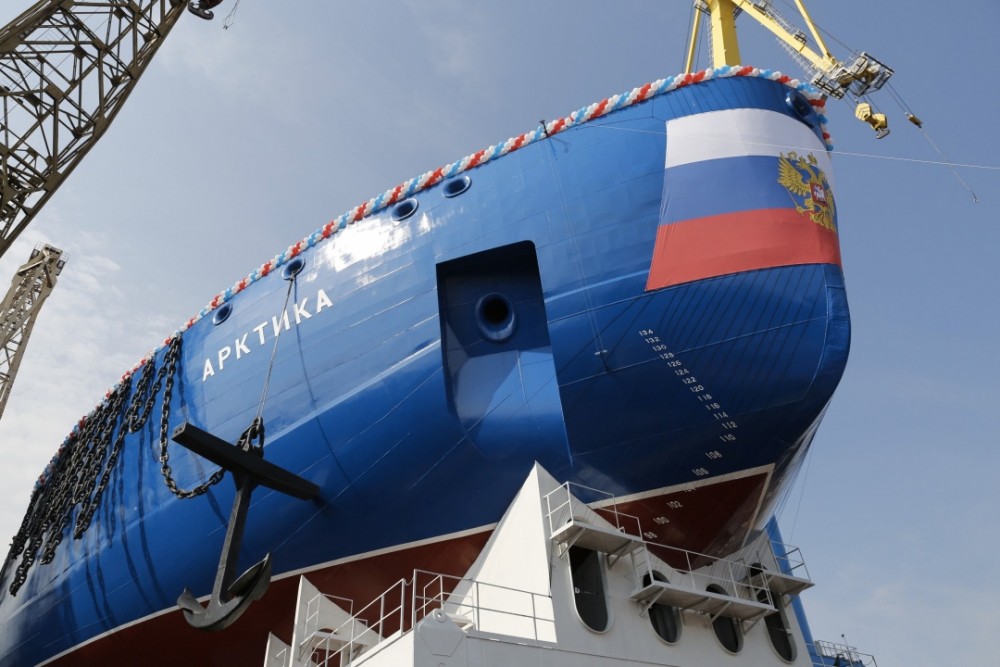
New Managing Director for Bellona Norway
The Board of the Bellona Foundation has appointed former Minister of Climate and the Environment Sveinung Rotevatn as Managing Director of Bellona No...
News

Publish date: December 13, 2019
News
The Arktika nuclear icebreaker – currently billed as the largest in the world – has begun sea trials near the Baltic Shipyard in St Petersburg, authorities said on Thursday.
The vessel represents the first of five enormous new icebreaking vessels Moscow intends to launch in the coming years as part of a drive to tame the Northern Sea Route, the shipping artery running along Russia’s Arctic coast, whose shores are rich in fossil fuels.
The two-day test voyage of the vessel, which replaces a decommissioned icebreaker also called the Arktika, will test the navigation and electrical systems and maneuvering characteristics, but not the nuclear reactors.
Vyacheslav Ruksha, head of Russia’s Northern Sea Route directorate, told Kommersant newspaper that there hadn’t been time to launch the reactors prior to the sea trials, but didn’t shed any light on the specific cause of the delay.
Presumably the reactors will be testing in the Arktika’s next set of sea trials, scheduled for the spring. The vessels will be commissioned next year before taking up residence at Atomflot, Russia’s Murmansk-based nuclear icebreaker headquarters.
The Arktika is the lead vessel in the so-called LK-60Ya icebreaker line, which is being built to enormous dimensions. Each of the ships is up to 173 meters long, and is powered by twin RITM-200 reactors, which deliver a combined 175 megawatts of power – making them the most powerful civilian vessels in the world.
The hulls of the Arktika’s sister vessels, the Ural and the Sibir, have also been launched by the Baltic Shipyard, and are likewise named for earlier Russian nuclear icebreakers that have been retired. Two more vessels in the line, which have yet to be named, are scheduled to launch in 2024 and 2026, according to a $1.4 7 billion government tender published in August.
The ships, which are designed to operate both in deep waters and along the Arctic’s craggy and shallow coastline, are Moscow’s battering ram as it seeks to open shipping through the Northern Sea Route on a year round basis.
The 5,600-kilometer Arctic passage lops days off conventional shipping schedules via the Suez Canal. But icebreaking vessels are still needed to keep trade lanes open for cargo convoys for much of the year – a service for which Moscow charges shippers a hefty toll.
President Vladimir Putin, who is betting big on climate change to thaw the Arctic, last year ordered his government to boost shipping through the Northern Sea Route to 80 million tons a year by 2024, a major boost over current levels.
The wager seems to be paying off. This week, scientists warned that a massive permafrost melt in the Arctic, where temperatures are warming twice as fast any anywhere else, could release more carbon dioxide than is already in the atmosphere. Already, says data published by the US National Oceanic and Atmospheric Administration, Arctic carbon dioxide levels are reaching those of Japan or Russia. Ice levels at the pole are likewise retreating by about 12.8 percent a year, meaning the Arctic is absorbing yet more solar radiation.
Shipping via the Northern Sea Route is likewise on the rise. Last month, Rosatom, Russia’s state nuclear corporation, which oversees the Arctic artery, reported that cargo volumes through the route would jump by 68 percent, to 30 million tons, by the end of this year. Almost all of that traffic is accounted for by oil, gas and coal.
While most nations with access to the Arctic have been shy about capitalizing on global warming to commercialize the pristine polar environment, Putin has not. The Kremlin strategy suggests that by the time climate change helps make the Northern Sea Route navigable all year, Russia will have full control of any traffic on the route, and will be actively exploiting it for its own commodity exports, shortening the shipping path to Asia.
How that approach will affect the rest of the world, however, is not in dispute. According to a study published by the science journal Nature, Russia’s current climate policies would push up global temperatures by more than 5 degrees Celsius — at least 3 degrees higher than the limit climate scientists are aiming for.

The Board of the Bellona Foundation has appointed former Minister of Climate and the Environment Sveinung Rotevatn as Managing Director of Bellona No...

Økokrim, Norway’s authority for investigating and prosecuting economic and environmental crime, has imposed a record fine on Equinor following a comp...

Our op-ed originally appeared in The Moscow Times. For more than three decades, Russia has been burdened with the remains of the Soviet ...

The United Nation’s COP30 global climate negotiations in Belém, Brazil ended this weekend with a watered-down resolution that failed to halt deforest...